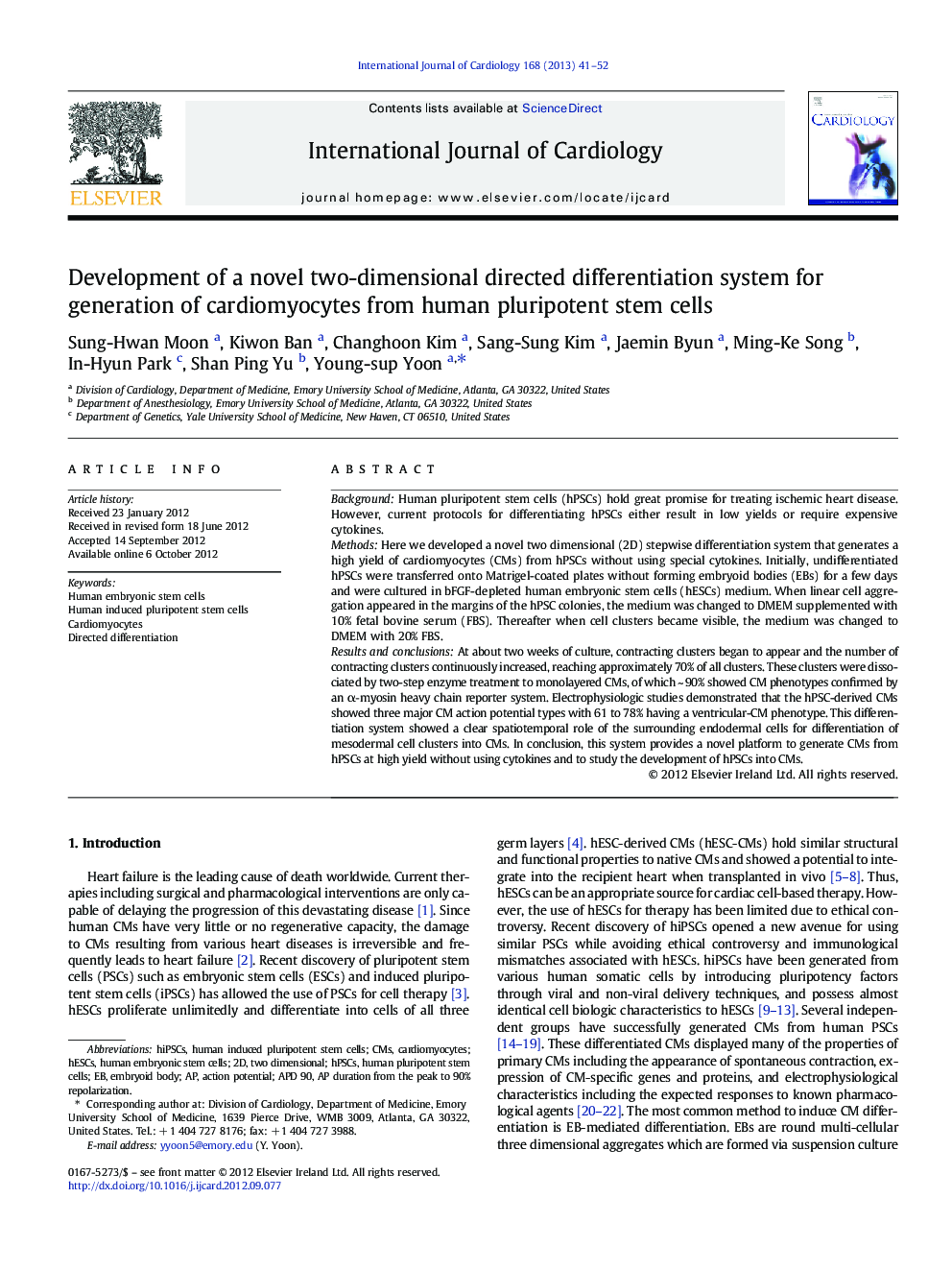| Article ID | Journal | Published Year | Pages | File Type |
|---|---|---|---|---|
| 5976535 | International Journal of Cardiology | 2013 | 12 Pages |
BackgroundHuman pluripotent stem cells (hPSCs) hold great promise for treating ischemic heart disease. However, current protocols for differentiating hPSCs either result in low yields or require expensive cytokines.MethodsHere we developed a novel two dimensional (2D) stepwise differentiation system that generates a high yield of cardiomyocytes (CMs) from hPSCs without using special cytokines. Initially, undifferentiated hPSCs were transferred onto Matrigel-coated plates without forming embryoid bodies (EBs) for a few days and were cultured in bFGF-depleted human embryonic stem cells (hESCs) medium. When linear cell aggregation appeared in the margins of the hPSC colonies, the medium was changed to DMEM supplemented with 10% fetal bovine serum (FBS). Thereafter when cell clusters became visible, the medium was changed to DMEM with 20% FBS.Results and conclusionsAt about two weeks of culture, contracting clusters began to appear and the number of contracting clusters continuously increased, reaching approximately 70% of all clusters. These clusters were dissociated by two-step enzyme treatment to monolayered CMs, of which ~ 90% showed CM phenotypes confirmed by an αâmyosin heavy chain reporter system. Electrophysiologic studies demonstrated that the hPSC-derived CMs showed three major CM action potential types with 61 to 78% having a ventricular-CM phenotype. This differentiation system showed a clear spatiotemporal role of the surrounding endodermal cells for differentiation of mesodermal cell clusters into CMs. In conclusion, this system provides a novel platform to generate CMs from hPSCs at high yield without using cytokines and to study the development of hPSCs into CMs.
